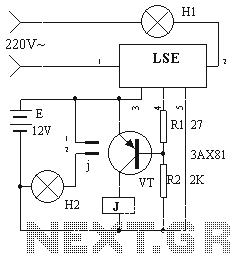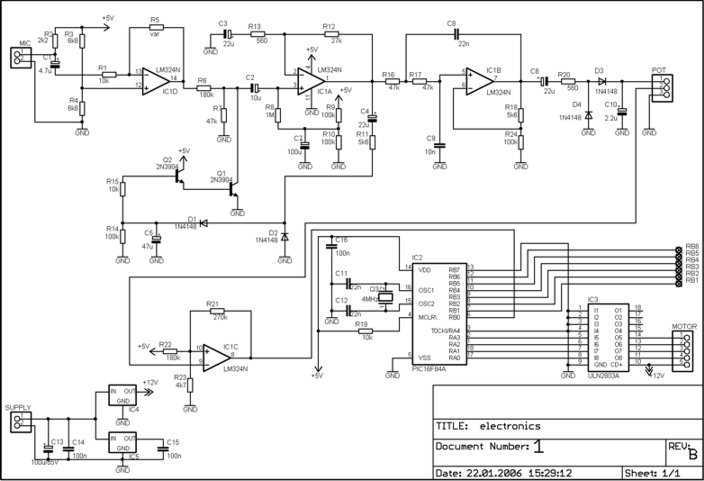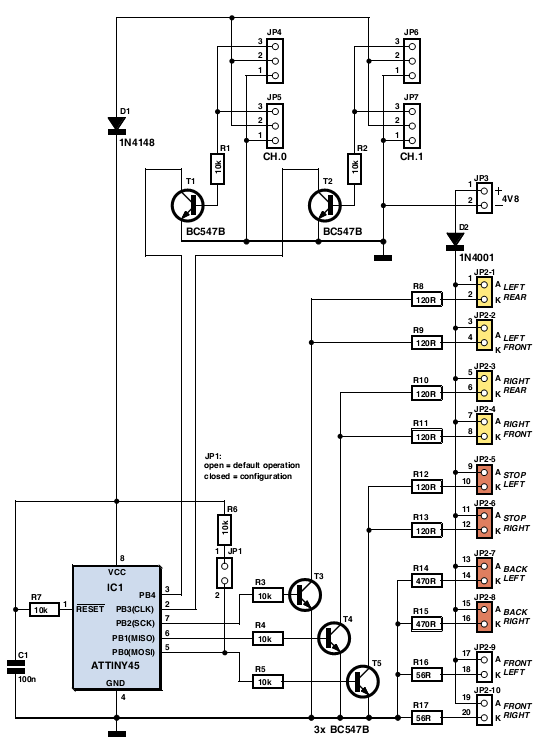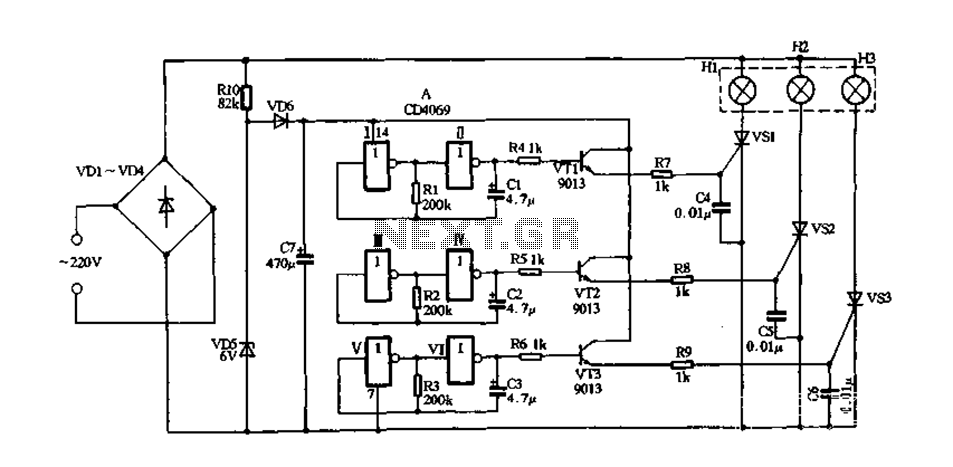
Strobe Light

Disco anyone? Actually, this strobe serves a much more useful purpose than making it look cool when you dance in the dark. You can use it to view fast-moving objects, look for cracks in PC boards (hold the strobe on the trace side of the board and look from the component side), and it is a great attention getter in a store window. This circuit is NOT isolated from ground. Use caution when operating without a case. A case is required for normal operation. Do not touch any part of the circuit with the case open or not installed. Most any diodes rated at greater than 250 volts at 1 amp can be used instead of the 1N4003s.
The described strobe circuit functions primarily as a visual indicator and diagnostic tool, utilizing a high-voltage discharge to create rapid flashes of light. The circuit's main components include a high-voltage power supply, a capacitive storage element, and a triggering mechanism that controls the discharge of the capacitor through a suitable lamp, typically a xenon flash tube or a high-intensity LED.
The power supply is designed to step up the voltage to the required level, typically exceeding 250 volts, to ensure sufficient energy is stored in the capacitor. The capacitor is charged to this high voltage, and when triggered, it discharges rapidly through the load, producing a bright flash. The triggering mechanism can be implemented using a simple switch or a more sophisticated electronic control, such as a microcontroller, to allow for variable flash rates or patterns.
Safety precautions are emphasized due to the high voltages involved. The circuit must be enclosed in a proper casing to prevent accidental contact with live components. It is critical to ensure that the circuit is not operated with the case open, as this poses a risk of electric shock. Additionally, the circuit's lack of isolation from ground necessitates careful handling to avoid short circuits or damage to connected devices.
For the diode selection, while the 1N4003 is a common choice, any diode rated for over 250 volts and capable of handling at least 1 amp can be substituted, providing flexibility in component sourcing. The use of a diode in the circuit typically serves to protect against reverse polarity and to ensure proper current flow during the discharge cycle.
This strobe circuit is versatile, serving applications beyond entertainment, including the inspection of electronic boards for faults by illuminating fast-moving objects or traces, making it a valuable tool in both hobbyist and professional settings.Disco anyone? Actually, this strobe serves a much more useful purpose then making it look cool when you dance in the dark. You can use it to view fast moving objects, look for craks in PC boards (hold the strobe on the trace side of the board and look from the component side), and it is a great attention getter in a store window.
# This ciruits is NOT isolated from ground. Use caution when operating without a case. A case is required for normal operation. Do not touch any part of the circuit with the case open or not installed. Most any diodes rated at greater then 250 volts at 1 amp can be used instead of the 1N4003`s. 🔗 External reference
The described strobe circuit functions primarily as a visual indicator and diagnostic tool, utilizing a high-voltage discharge to create rapid flashes of light. The circuit's main components include a high-voltage power supply, a capacitive storage element, and a triggering mechanism that controls the discharge of the capacitor through a suitable lamp, typically a xenon flash tube or a high-intensity LED.
The power supply is designed to step up the voltage to the required level, typically exceeding 250 volts, to ensure sufficient energy is stored in the capacitor. The capacitor is charged to this high voltage, and when triggered, it discharges rapidly through the load, producing a bright flash. The triggering mechanism can be implemented using a simple switch or a more sophisticated electronic control, such as a microcontroller, to allow for variable flash rates or patterns.
Safety precautions are emphasized due to the high voltages involved. The circuit must be enclosed in a proper casing to prevent accidental contact with live components. It is critical to ensure that the circuit is not operated with the case open, as this poses a risk of electric shock. Additionally, the circuit's lack of isolation from ground necessitates careful handling to avoid short circuits or damage to connected devices.
For the diode selection, while the 1N4003 is a common choice, any diode rated for over 250 volts and capable of handling at least 1 amp can be substituted, providing flexibility in component sourcing. The use of a diode in the circuit typically serves to protect against reverse polarity and to ensure proper current flow during the discharge cycle.
This strobe circuit is versatile, serving applications beyond entertainment, including the inspection of electronic boards for faults by illuminating fast-moving objects or traces, making it a valuable tool in both hobbyist and professional settings.Disco anyone? Actually, this strobe serves a much more useful purpose then making it look cool when you dance in the dark. You can use it to view fast moving objects, look for craks in PC boards (hold the strobe on the trace side of the board and look from the component side), and it is a great attention getter in a store window.
# This ciruits is NOT isolated from ground. Use caution when operating without a case. A case is required for normal operation. Do not touch any part of the circuit with the case open or not installed. Most any diodes rated at greater then 250 volts at 1 amp can be used instead of the 1N4003`s. 🔗 External reference





